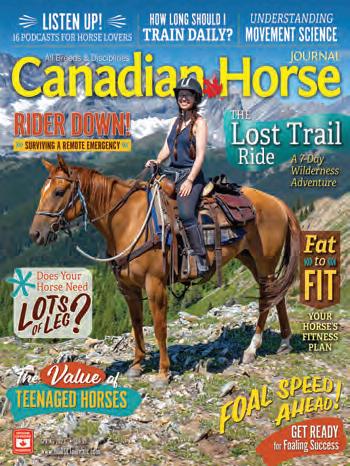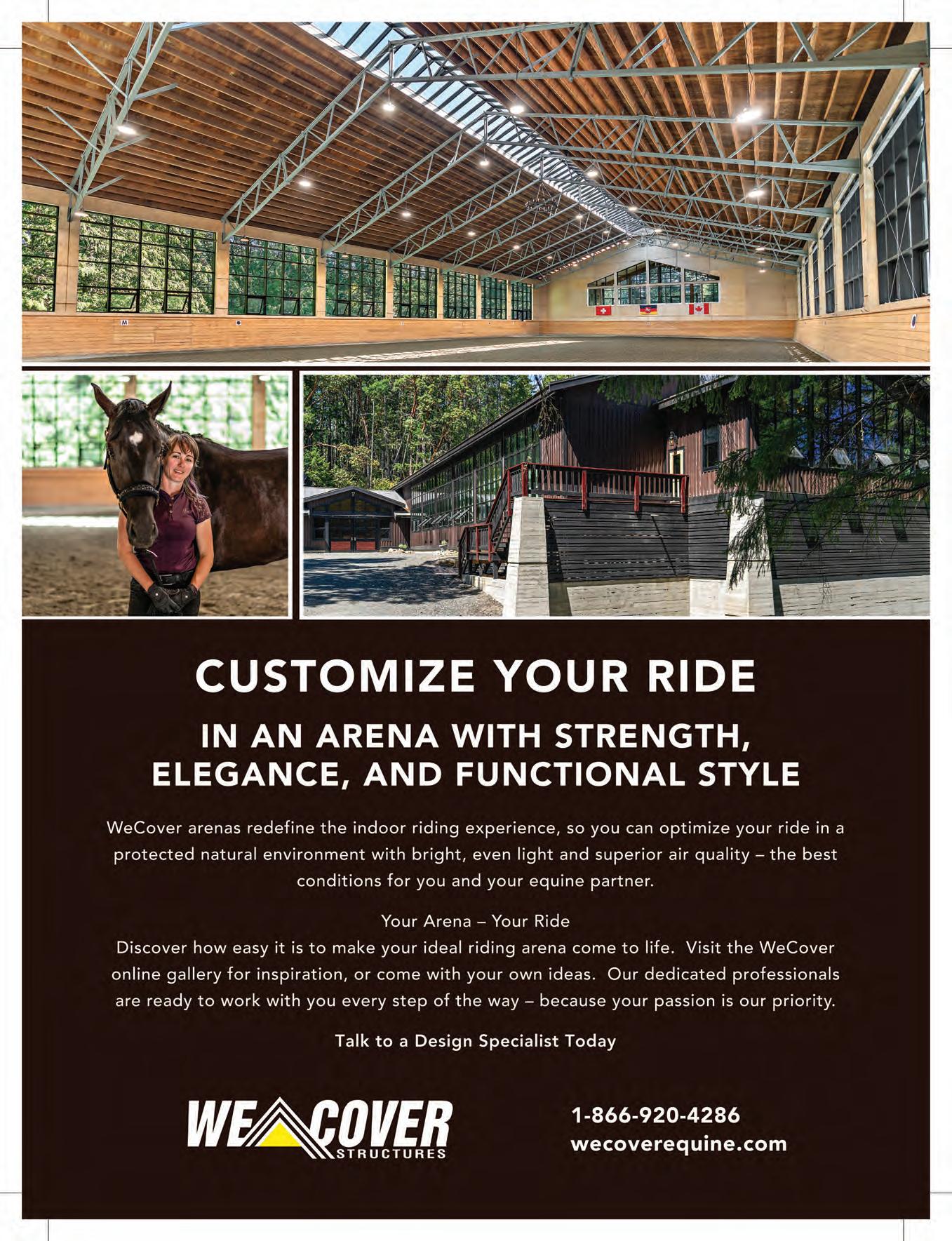




Prevention is the ideal when it comes to lameness, but practically everyone who has owned horses has dealt with a lay-up due to an unforeseen injury at some point. This article will provide tools to sharpen your eye for detecting lameness, as well as review prevention tips and discuss the importance of early intervention. We’ll begin with a glimpse into current research endeavouring to heal tendon injuries faster, which has obvious benefits to horse welfare and supports horse owners eager to return to their training programs.
Lameness is a huge focus for Judith Koenig, DVM, DVSc, DACVS of the Ontario Veterinary College (OVC), whose main interest is in tissue healing. She spends half of her time as a surgeon and teacher with a strong interest in Equine Sports Medicine and rehabilitation, and
the other half as a researcher at the OVC.
“I think over the past 20 or 30 years we have become very, very good in diagnosing the cause of lameness,” says Koenig. “In the past we had only radiographs and ultrasound as diagnostic tools, but by now most referral centres also have MRI [magnetic resonance imaging] available and that allows us to diagnose joint disease or tendon disease even more. We are much better now finding causes that previously may have been missed with ultrasound.”
Improvements in diagnostics have resulted in increased ability to target treatment plans. With all the different biologics on the market today, Koenig sees a shift in the management of joint disease with people getting away from steroids as a treatment.
Koenig has investigated the use of many different modalities to see if they accelerate tissue healing and has studied which cellular pathways are affected. When asked about the latest news on research she has been involved in, she proclaims: “I’m most excited about the fact that horses are responding well to stem cell treatment. Better than I have seen any response to any other drug we have tried so far!”
Two recent collaborative studies have produced very exciting findings, revealing future promise for treating equine osteoarthritis with stem cell therapy.
In a safety study, Koenig and her team at the OVC have shown equine pooled cryopreserved umbilical cord blood in mesenchymal stem cells (MSCs) to be safe
6.637 mm
3.146 cm
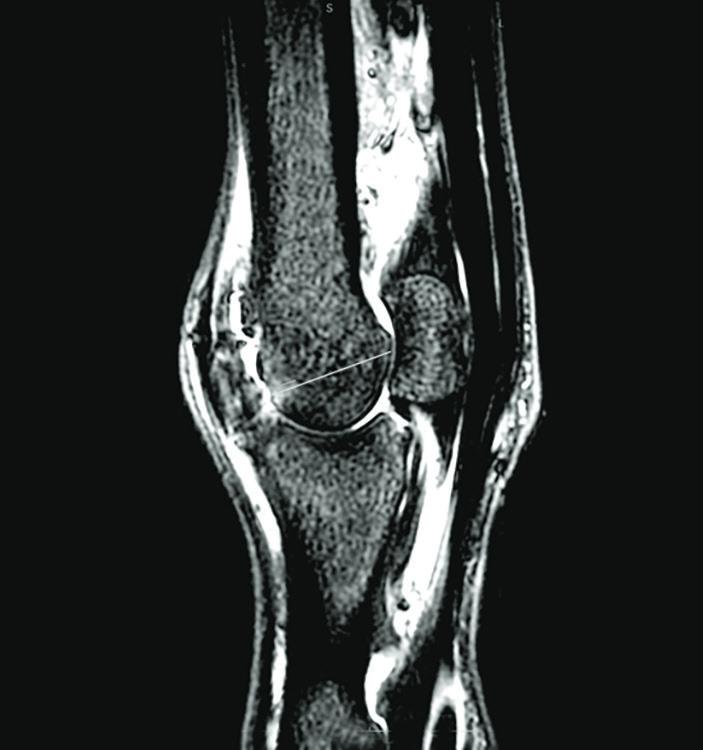
MRI revealed that the horses treated with stems cells had less progression of osteoarthritis. “They were less lame when exercised after the stem cell therapy than the horses that received saline,” says Koenig.
and effective in treatment of osteoarthritis.
“These cells are the ones harvested from umbilical cord blood at the time of foaling and then that blood is taken to the lab and the stem cells are isolated out of it,” explains Koenig. The stem cells are then put through a variety of tests to make sure they are free of infectious diseases. Once given a clean bill of health they are expanded and frozen.
The MSCs harvested from multiple donors of equine umbilical cord blood were compared to saline injections in research horses. “This type of cell is much more practical if you have a cell bank,” says Koenig. “You can treat more horses with it and it’s off the shelf.” There were no systemic reactions in the safety study. Research has also shown no different reactions when sourcing from one donor or multiple donors.
In the second study, 10 million stem cells per vial were frozen for use in healing osteoarthritis from fetlock chips in horses that were previously conditioned to be fit. After the fetlock chip was created, exercise commenced for six more weeks and then osteoarthritis was evaluated by MRI for a baseline. Half the horses were treated with the pooled MSCs and the control group received saline before another month of exercise. Then MRI and lameness exams were repeated, as well as arthroscopy to score the cartilage and remove the chip.
Lameness was decreased and cartilage scores were improved in the group that received stem cell therapy at the time of
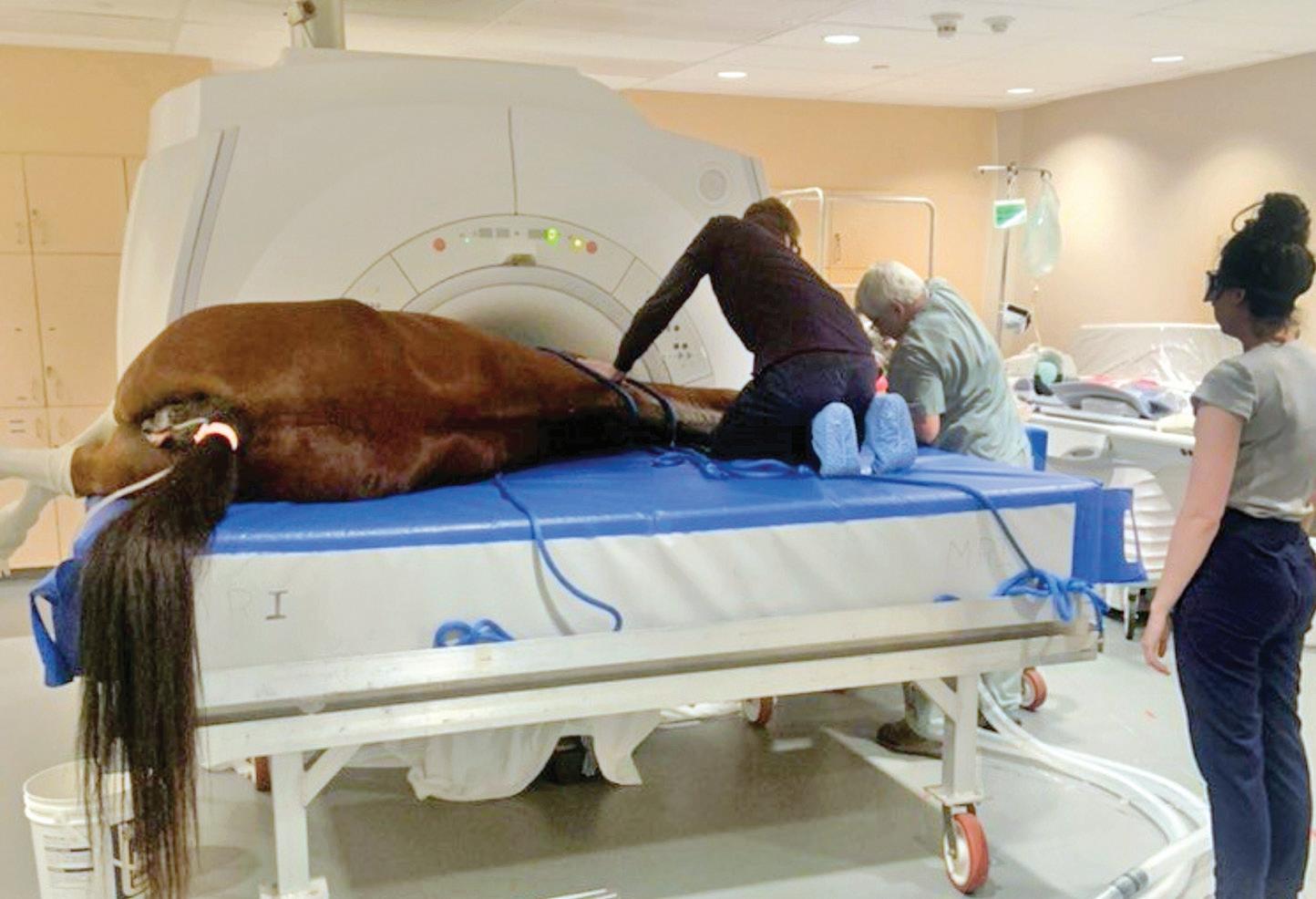
the second look with arthroscopy. Many diagnostics were utilized during this study. MRIs, X-rays, ultrasounds, and weekly lameness evaluations all revealed that signs of osteoarthritis in fetlock joints improved in the group treated with
equine umbilical cord blood MSCs. After six weeks of treatment, the arthroscopic score was significantly lower (better cartilage) in the MSC group compared to the control group.
This research group also just completed
Method Uses
NERVE BLOCK
Using an anaesthetic agent (a drug that causes numbness, such as carbocaine) in one area of the leg.
RADIOGRAPHS
Also called X-rays, radiographs allow veterinarians to see the bones.
ULTRASOUND
Allows veterinarians to see the soft tissues such as muscles, ligaments, and tendons.
CATSCAN
Advanced form of X-ray that gives a highly detailed picture of the bone. Can produce a reconstructed 3-D image.
MRI
Can create detailed images of soft tissue and bone.
ARTHROSCOPY
Considered a diagnostic surgery. A small camera called an endoscope is placed through a small incision and used to look at a joint.
Helps determine which area is causing the lameness.
Looks for injury or changes to the bone, such as fractures, evidence of arthritis, or calcification.
Looks for issues in these areas, such as a lesion on the tendon.
Small fractures can also be seen on ultrasound.
Can help with a quicker and more detailed diagnosis and may help guide a more appropriate treatment plan.
Can be used to get a clearer picture of what’s going on in the knee, hock, lower limb, and hoof capsule.
Can be used to evaluate and treat problems with the joint, such as small chip fragments and osteochondrosis dissecans (OCD) fragments.

Neurologic issues can affect horses at any age, and clinical signs can result from infectious and non-infectious causes.
Increased understanding of equine neurologic conditions has enabled earlier diagnosis and improved outcomes, and vaccines have reduced the spread of infectious diseases. However, diagnosis and treatment remain challenging in some cases.
Infectious neurological disorders are well known due to highly publicized outbreaks.
Viral neurologic diseases are often vector-borne, commonly spread by mosquitoes. Vaccines are available to prevent infection in many cases. Vector control and biosecurity practices can also
help stem the spread of these diseases, which include:
n Eastern/Western/Venezuelan equine encephalitis (EEE/WEE/VEE), which cause inflammation of the brain. Although rare, EEE has a high mortality rate in horses and humans. Outbreaks of WEE have resulted in significant numbers of deaths in both species. VEE occurs in Central and South America, Mexico, and the southern US, and is considered a possible biowarfare agent since it can be transmitted from animals to humans (zoonosis). The EEE/ WEE vaccine is recommended annually, and the VEE vaccine is risk-based.
n Equine herpes myeloencephalopathy (EHM), which is caused by the neurological form of equine herpesvirus 1 (EHV-1),

which attacks the spinal cord and brain and can be fatal. Infected horses can act as carriers and shed the virus. Available EHV-1 vaccines are not labelled as neuroprotectant. However, vaccination is recommended to provide herd immunity against EHV-1 and potentially reduce cases with neurologic disease.
n Rabies, which has the highest case fatality rate of any infectious disease. It is a significant threat in South and Central America. Vaccination is recommended annually.
n West Nile virus (WNV), which can cause inflammation of the brain and spinal cord, and possibly death. Many infected horses do not show signs of illness, but others develop neurologic disease. Vaccinate against WNV annually.

protozoal myeloencephalitis (EPM), caused by infection of the central nervous system with the protozoa Sarcocystis neurona or Neospora hughesi. Clinical signs of S. neurona infection depend on the area of the central nervous system with the parasite and the type of damage caused. Cases due to N. hughesi have a range of clinical signs.
Although bacterial infections of the nervous system, such as meningitis and abscesses, are rare in horses, toxins produced by Clostridium bacteria can result in severe diseases:
n Botulism is caused when Clostridium botulinum spores are ingested or infect a wound and release a neurotoxin, re-
vaccine against type-B is available for horses in high risk areas but there is no cross-protection between other types.
n Tetanus is a potentially fatal disease that occurs when Clostridium tetani spores enter open wounds where they release a neurotoxin. Clinical signs include stiffness, muscle spasms, and the inability to open the mouth (“lockjaw”). Treatment is challenging and annual vaccination is recommended.
Non-infectious neurological disorders can be caused by injury, congenital and developmental defects, genetic conditions, as well as by dietary and
known to include:
n Cerebellar abiotrophy (CA), which is found in Arabians. Foals appear normal at birth but exhibit neurological deficits within six months of age. Affected horses may be dangerous as they are prone to accidents and injuries. A DNA test is available.
n Juvenile idiopathic epilepsy (JIE), which is found in Egyptian Arabian foals during the first year of life. Clinical signs include recurrent seizures characterized by loss of consciousness and rapid muscle contractions. A causative mutation has not been identified. After one year of age, foals no longer experience seizures, but problems related to head trauma can

Horses are pets, performance athletes and livestock. They’re kept in backyards, on farms, at boarding stables, and working ranches in Canada. The horse industry encompasses professional riders, everyday horse enthusiasts, animal care experts, and thousands of businesses in the farming, ranching, sport, agriculture, and entertainment sectors. Hard numbers about jobs, taxes, the industry’s financial contributions, and who’s involved are imperative for discussions with provincial and federal government agencies. But during the COVID-19 pandemic, lack of information about the needs of boarding facilities, coaching barns, and horse farms limited the financial support they received. There was simply no baseline of information about the people, horses, and businesses in the industry; the revenue it creates; or potential impacts of lockdowns.
“The last time Canada’s horse industry was surveyed nationally was in 2010,” says Melanie McLearon at Equestrian Canada (EC). “But the sector has changed. The economy has changed. So, we needed to better understand our industry and its contributions.”
That need for understanding resulted in EC commissioning research on Canada’s equine sector by Wilton Consulting Group (WCG) and Serecon in 2023. Their report, The Canadian Equine Sector: Socio-Economic Insights 2023, summarizes an online survey completed by 4,263 Canadians representing 19,491 individuals in the horse industry, 40 interviews with industry representatives, data research, and an economic analysis.
“The industry is contributing to the Canadian economy in a significant way, even though it’s a niche industry,” says McLearon.
Canadians who kept horses in 2022 directly spent over $8.3 billion on buildings, fences, equipment, repairs, feed, bedding, veterinary and farrier care, travel, tack, insurance and other products and services. The largest expenditures were over $1.1 billion on feed, over $900 million on travel, and over $850 million worth of veterinary care.
The horse industry also provided over
By Tania Millen, BSc, MJ116,000 jobs — equivalent to over 71,000 full time jobs — which equals the number of jobs provided by Ontario’s oil and gas sector. The greatest number of jobs were in Ontario (36,182) and Alberta (33,639).
Overall, Canada’s horse industry provided over $8.69 billion to Canada’s Gross Domestic Product and $894 million in provincial and federal taxes in 2022. To put this in perspective, the equine sector contributed slightly less to Canada’s economy than the $11 billion cannabis sector. People involved with horses in Canada aren’t just having fun — they’re actively contributing to the country’s economy.
Canada’s horse industry provides social benefits, too. Almost all of the survey respondents (96 percent) agreed or strongly agreed that interacting with horses contributes to human health and well-being. Additionally, riding can help children and youth develop lifelong healthy habits. Plus, equine-assisted services can help people manage mental and physical disabilities.
It’s not just individuals that benefit from messing about with horses. Over half of survey respondents (52 percent) agreed or strongly agreed that the Canadian equine sector connects rural and urban

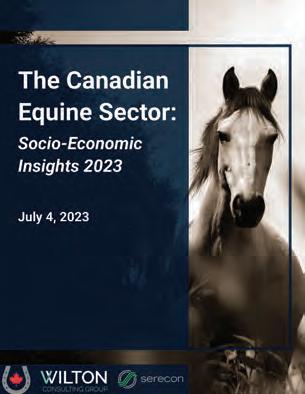
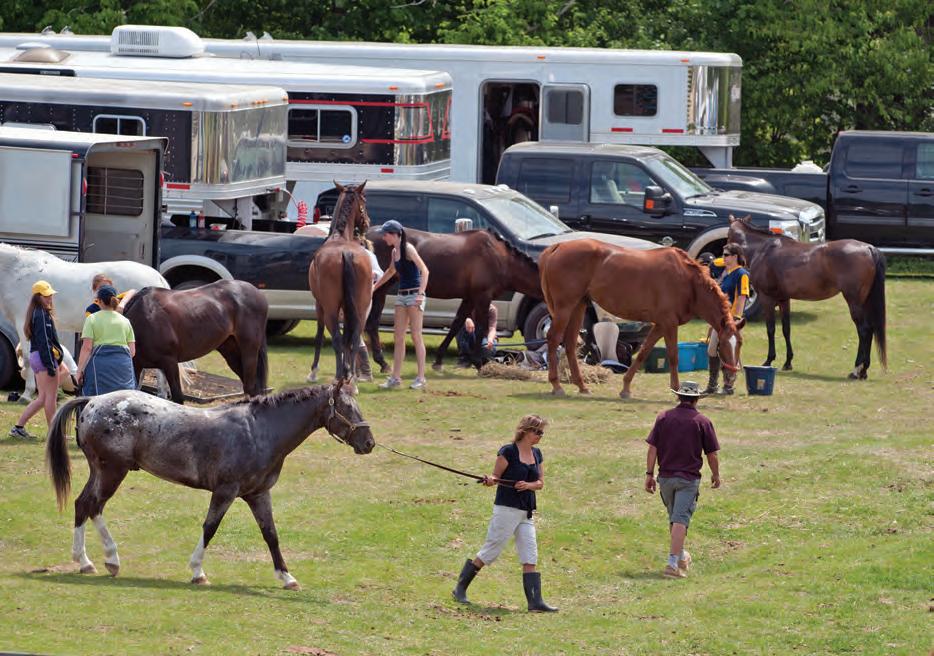
areas. Equine farms can provide a buffer between urban and agricultural lands while farms can help increase urbanite awareness of farming activities. Equine facilities can also support groundwater recharge areas, soil fertility, surface water control, and wildlife habitat.
What about the horses? The report estimated there were 478,269 to 545,136 horses in Canada in 2021, which averages 509,099 horses across the country. That’s about half the estimated 963,500 horses in Canada in 2010 and the estimated 1,043,433 horses in Canada in 2006. The report did not speculate on the rationale for such a strong decline in Canada’s equine population. However, estimating the number of horses in Canada is tricky. Unlike other farm animals, there’s no overarching horse registry in the country. Therefore, the horse population was calculated by using 2021 census numbers for equines on census-defined farmland (183,733) and a 2.8 national horse population multiplier to reflect horses kept on non-farm properties.
In 2022, Alberta was clearly Canada’s horse capital with 37 percent of the country’s equines. Ontario (25 percent) and Saskatchewan (13 percent) had the next-largest herds.
Of Canada’s approximately half-million horses, almost one-third (28 percent) are
primarily used for recreation, 24.5 percent are used for amateur sport, and 19 percent are working animals. The rest are used for breeding (14 percent), professional sport (8 percent), elite sport (4 percent) and racing (2.5 percent). That means over one-third of Canada’s horses (36 percent) are used for amateur, professional, or elite sports. Most horses (87 percent) are owned by individual participants while the rest are leased or jointly owned.
However, horses aren’t cheap to buy, and purchase prices vary by province and use. It costs an average of $5,256 to buy a horse in Yukon Territory and over $27,000 in British Columbia (BC). The cost of recreational horses averages $14,417 across Canada, while sport horses average $21,201 for amateur competitors, $32,690 for professionals, and $56,840 for elite riders.
Horse owners won’t be surprised that keeping horses is expensive, too. It cost an average of $15,270 to keep one horse in Canada, in 2022. Ontario ($17,519) and BC ($17,303) were the most expensive provinces to keep horses while Newfoundland and Labrador ($6,074) was the cheapest. But horse-keeping costs also depended on horse use. For example, it cost an average of $6,706 annually to keep a working horse in Alberta, where the average cost of keeping an elite sport horse was $24,630 per year.
Almost half (47 percent) of horses were boarded in 2022, and the cost of boarding across Canada averaged $818
per month. Ontario ($897) and BC ($872) were the most expensive provinces to board horses, with Prince Edward Island ($455) the least expensive.
Annual veterinary care ranged from an average of $1,306 for working horses to $3,252 for elite sport horses in 2022. Farrier care cost an average of $617 per year for breeding stock and $2,200 annually for elite sport horses.
Those who completed the online survey were primarily women (89 percent), tended to have higher incomes than most Canadians, and were well educated (53 percent had a bachelor degree or more). Of those surveyed, 69 percent were recreational participants and 61 percent were amateur competitors. Participants aged 30 to 39 and 60 to 69 were overrepresented. The report provided no data regarding the number of horse-owning individuals, households, or properties which housed horses in Canada. However, according to the report, over 155,000 acres of land in Canada are used for equine facilities, farms, and ranches.
The 649 coaches and trainers who responded to the survey stated they teach up to three different equestrian disciplines, with half (49 percent) teaching dressage, 44 percent teaching show jumping, and more than one-third (36 percent) teaching hunter lessons.



Thirty years ago, jobs involving horses primarily entailed mucking stalls, grooming, farrier work, coaching, or training. Those jobs still exist. But as Canada’s horse industry has evolved, employment in Canada’s equine world has expanded, too. In September, 2023 a new study commissioned by Equestrian Canada into the socio-economic impact of Canada’s equine sector found that the horse industry provided over 70,000 fulltime equivalent jobs in 2022.
“The job market in the horse industry is very broad,” says Gayle Ecker, Director of Equine Guelph at the University of Guelph in Ontario.
Not only are there jobs working directly with horses, but Canada’s horse industry produces a multitude of services and products for horses, riders, owners, and Western lifestyle enthusiasts and each of those offer employment. There are also burgeoning opportunities for keen entrepreneurs as demand for custom products and services grows.
“There are many unique aspects to the horse industry,” says Ecker. “It’s very labour intensive and requires people to handle horses safely and feed every morning. That’s not automated.
“But people need to be willing to work,
and sometimes it’s hard work,” Ecker continues. “The hours can be challenging. Racetrack workers might have to be at the track by five or six in the morning and not get home until after 11 pm. Grooms for competition or racehorses have to travel, too.”
To help potential employees learn about opportunities, Equine Guelph has launched an online Equine Careers Showcase describing 75 jobs in the horse industry. It explains each position and there are video interviews with people employed in those roles.
“It’s a really interesting time to have a career in the equine industry,” says Alisa


Brace, an instructor at Olds College of Agriculture & Technology in Alberta, “because the opportunities are endless. But I think that many of the upcoming opportunities are going to be entrepreneurial.”
Some jobs require formal training; others, just a willingness to learn quickly and work hard. Business savvy is helpful, along with an understanding of the larger equine industry. Many who make a living in the horse industry wear multiple hats to make ends meet.
Jobs in Canada’s horse industry generally fit into three categories: handson activities where horses are an integral part of every day, providing services, or

Traditional jobs like cleaning stalls and feeding will always be available.
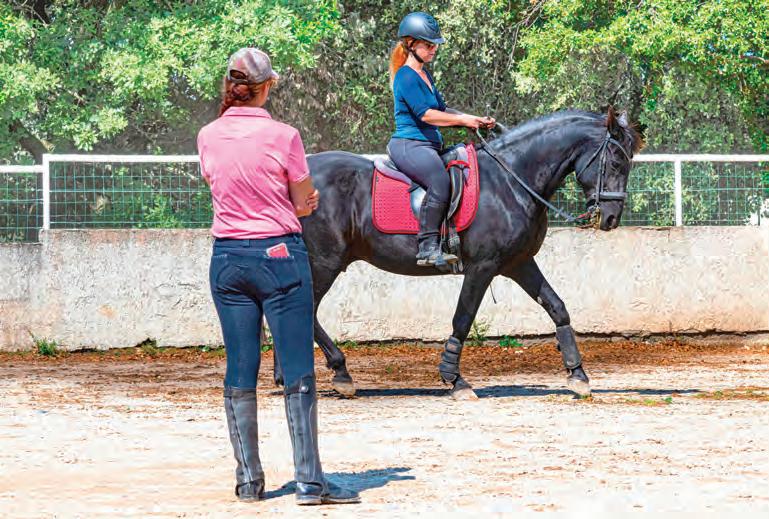
selling products.
Hands-on horse jobs include being a professional rider or driver, horse trainer, groom, stable hand, caretaker, wrangler, or working student. Horses are part of everyday activities in these jobs, and they require varying levels of horse knowledge and skills.
“Jobs cleaning stalls, warming up horses, and feeding are always going to be available because people are always going to be training and boarding horses,” says Brace.
“There’s a huge demand for grooms and caretakers,” says Ecker. “And for those who want to move up in the industry, the best place to start is in a caretaker or groom position.”
However, not everyone wants to start at entry level and work up.
Since it takes time to build skills and clientele in the highly-competitive career of horse training, many trainers also give riding lessons.
“The bulk of students who come to Lakeland College — probably 80 percent or more — want to be horse trainers,” says Ron Hoffman, who leads the Western Ranch & Cow Horse program at Lakeland College in Vermilion, Alberta. But training horses is a highly competitive career choice where few succeed.
“A large percentage of the population, now, haven’t grown up on a farm,” says Hoffman. “So they don’t have seat-of-thepants knowledge and skills of kids that grew up riding horses.”
“If you want to train horses, it takes time to build the skills,” says Hoffman. “You can have the right idea but your body can’t execute until you reach a certain skill level, which takes time. So it helps to be able to wear different hats and do different jobs,
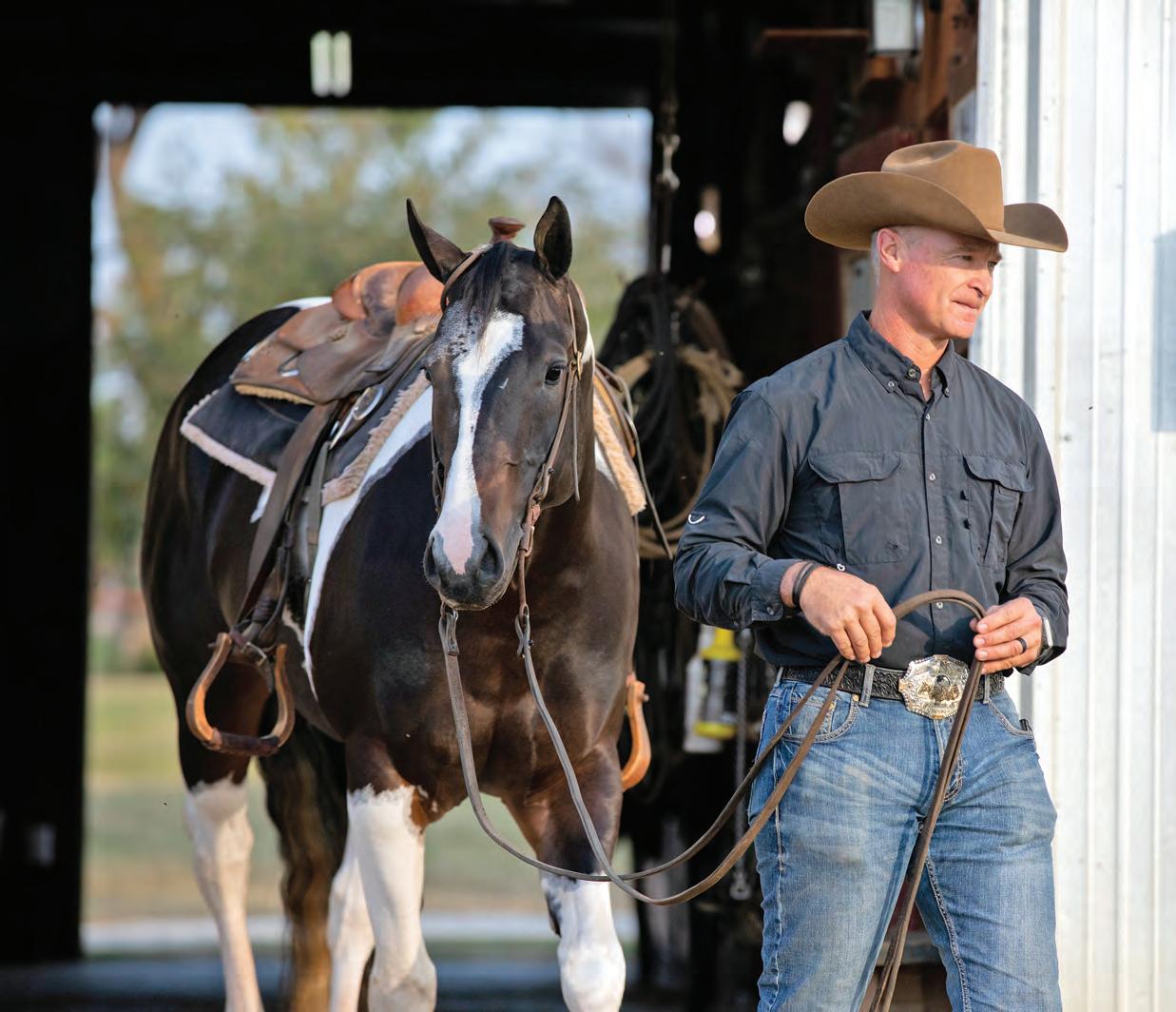
The horse industry is well known for its informality. Anyone can coach, train horses, nail on horseshoes, or other imperative services regardless of their qualifications. But as society becomes more risk averse and those who didn’t grow up with horses enter the industry, higher levels of professionalism are expected.
The online Merriam-Webster dictionary defines “professionalism” as:
“1: the conduct, aims, or qualities that characterize or mark a profession or a professional person;
2: the following of a profession (such as athletics) for gain or livelihood.”
Accordingly, charging money and
making a living training horses, coaching riders, trimming horses’ feet, offering bodywork services, or anything else is being a professional Yet acting professionally (professionalism) is different. It’s an action which anyone — not just professionals — can apply to their activities. Professionalism involves integrity — being what you state you are and having the expertise and paperwork to back it up. Professionalism is synonymous with expertness, competence, virtuosity, skillfulness, and proficiency. It’s the opposite of amateurishness, inexperience, and unpreparedness.
Acting professionally furthers a
positive reputation, increases business, attracts better quality clients, may save taxes, and can buffer legal problems when things go awry. In the horse industry, practical applications of professionalism could entail coaches, bodyworkers, and farriers becoming certified to illustrate they can produce as advertised; individuals who sell products or services operating as businesses; boarding barns utilizing signed agreements; and transport companies maintaining adequate insurance. Acting professionally generally supports positive horse welfare, too.
However, upholding professional standards isn’t a box to check — it’s a way
of acting every day. Here are seven ways to increase professionalism regardless of your involvement in the horse industry.
1 Be organized, consistent, reliable, ethical
Together, organization, reliability, consistency, and ethical actions build strong relationships and reflect professionalism. Being organized helps ensure that the important things are taken care of. Top riders and trainers minutely schedule their days to fit everything in. Consistency — acting in the same way — establishes your reputation and is linked to accountability. Being organized and consistent breeds reliability. Acting ethically means doing what’s morally right regardless of circumstances. Exuding professionalism through these attitudes and actions will help build a positive reputation in the horse world — others will take you seriously.
2 Get certified
Accountants, lawyers, doctors, and the like are all required to be certified to practice. This isn’t the case in the horse industry. Anyone who wants to train horses, coach, or trim horses’ feet can do so without certification. Being certified

for these jobs and many others indicates professionalism and may help if things go awry and a client pursues legal action. Certification proves that you’ve mastered skills that experts have judged, and you can perform to an acceptable standard. It shows competence and commitment to your chosen field. Certification also promotes lifelong learning and up-todate knowledge. The horse industry is
Being certified indicates that you have mastered skills in your chosen field to an acceptable standard, and shows professionalism, competence, and commitment. Certification is an increasingly necessary credential to attract and retain clients.
changing rapidly, and potential clients are becoming more particular about the credentials of the people they hire. Certification is increasingly necessary to attract and retain paying clients.
3 Communicate clearly
Clear communication, whether in person or electronically, means both parties understand messages in the same

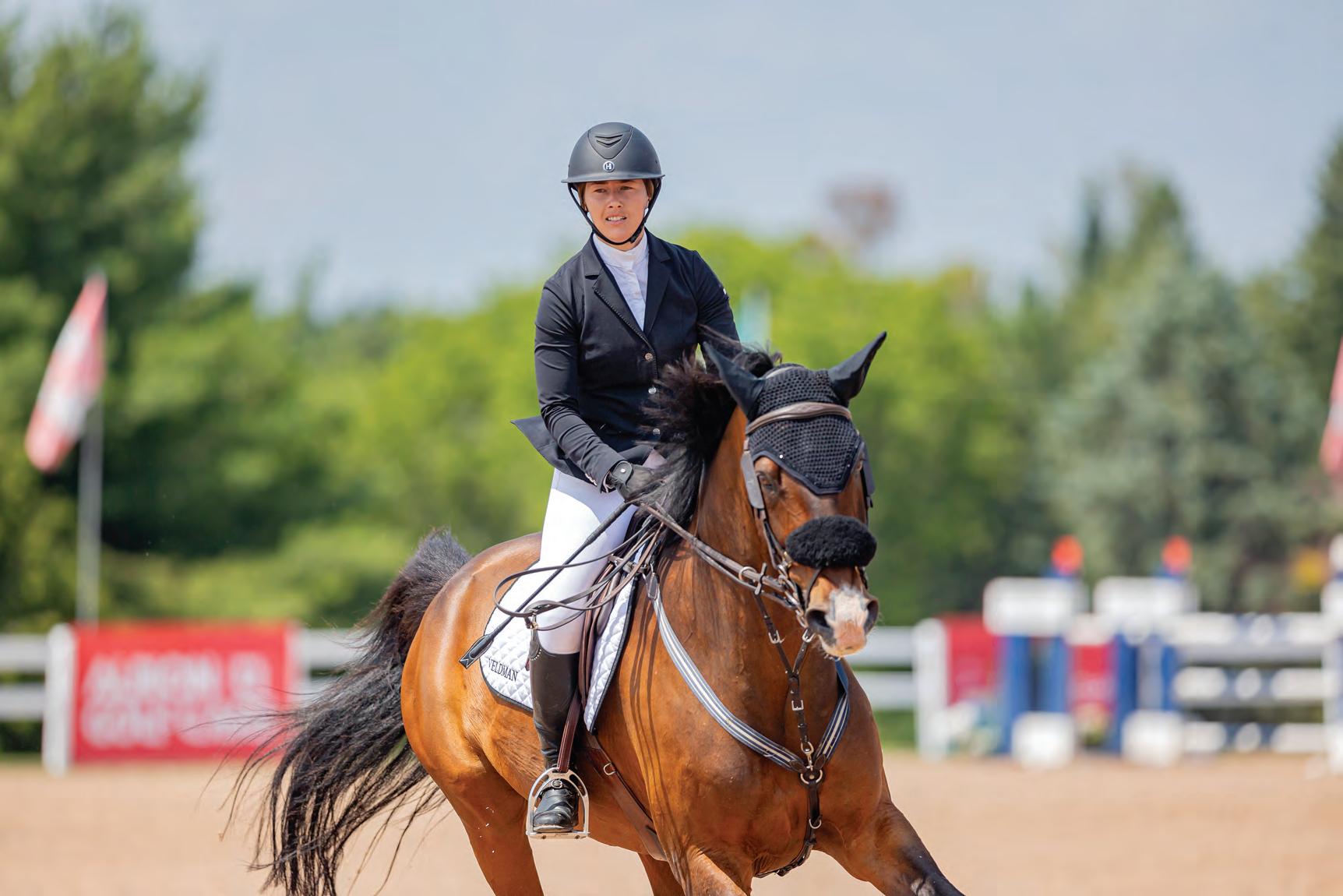
The gap between amateur and professional competitors is common in Canadian sports. Weekend skiers have significantly less skills than athletes on Canada’s ski team. Amateur hockey players don’t make Canada’s Olympic team. It’s the same in horse sports. Tiers of riders have developed as equestrian sports have become more technical. Upper-level horse sports are primarily the purview of professional and elite riders while amateurs play at lower levels.
“I don’t think it’s possible, today, to work downtown on Bay Street all day, ride one horse at night, and then go to the Olympic Games,” says Jacquie Brooks, a two-time
Canadian Olympic dressage rider who coaches riders and trains horses while she brings along her own upper-level mounts. “But I’d love to be proven wrong!”
Amateur riders are just as passionate about their sport as professionals, but these days it seems that only professionals reach elite levels of competition. Elite riders are paid to ride and compete horses owned by those with deep pockets while amateurs generally work in non-horsey careers to pay for their equestrian passion. So, do amateur, professional, and elite riders face similar challenges, or are there barriers between them? Four riders share their thoughts.
“Even if an amateur rider had a wonderful horse, I think there would be a breakdown somewhere en route to the top because they just wouldn’t have enough experience,” says Brooks.
That’s understandable, considering an amateur might only be riding one or two horses per day — far fewer hours in the saddle than a professional. Competitive success depends on the talent of both horse and rider.
“I’m a prime example,” says Brooks. “I came into the sport late. I was very lucky with one of my horses and so I was on the

then the sport. level at an at an talented, and compete for the they are the says Canadian show of the whereas developed sharper competing their increased isn’t a says single day. job. So to riding here, explains. “I don’t have the opportunity to gain 1.45 metre experience staying in Ontario. My horse could do it, but I can’t afford to travel internationally. It’s a tough pill to swallow sometimes.”
Veldman’s challenge is to continue advancing her riding skills while staying near home and being happy with the choices she’s made, knowing that her horse is talented enough to compete at a higher level.
Cutting and reining competitions also have open classes where amateurs could compete against professionals if they chose to. However, not many nonprofessionals go that route. Instead, they stay in their lane, competing in classes specifically for novices and nonprofessionals. Classes are further divided by how much prize money the rider has won in their lifetime.
“I think [having class divisions] is an incentive because you end up competing with people that are more like you,” says Brad Pedersen, a professional cutting horse trainer who operates Pedersen Training Centre in Lacombe, Alberta. “Amateurs don’t have to show against pros, so that makes it fairer, really.”
“Different reining classes give people who are new to the sport, or maybe not riding as talented a horse or just not that strong of a rider, a chance to compete,” says Monique Noble, an amateur reiner who has competed for over ten years in Alberta. “But anyone can go in open classes, so that’s where you see a higher level of riders and trainers competing.”
However, the costs of competing, training, and purchasing horses, tack, and transport for horse sports can be prohibitive.
“Money will limit both amateurs and professionals soon, and I think the amount of money needed is putting people off,” says Brooks about the dressage world.
“That’s what’s going to limit the number of people in the sport. I think the cost is what’s going to kill horse sport.”
“Once you get to the higher levels, you have to be able to buy higher level horses, and they’re very expensive,” says Noble about reining horses. That’s a limiting factor, and renewed interest in reining due to COVID-19 and the Yellowstone television series have pushed horse prices even higher.
Some horses are amateur-friendly to ride, and others are so challenging that only professionals can ride and train them. Not all professionals choose to bring along their competitive partners. Some professional riders purchase horses that are already trained to top level, then advance their aspirations — and those of the horse’s owners — with ready-made horses. That pushes horse prices higher, too.
“Horse racing is called the ‘sport of kings,’” says Noble. “Well, any upper-level horse sport is a sport of kings.”
Although increasing costs may have dampened some ambitions, many amateurs and professionals continue to pursue their passion.
Two-time Olympian Jacquie Brooks thinks it’s no longer possible to work full-time all day, ride one horse at night, and get to the Olympic Games. “But I’d love to be proven wrong!” Brooks is shown riding the 2011 Oldenburg gelding, Te Amo QOS, sired by Totilas.
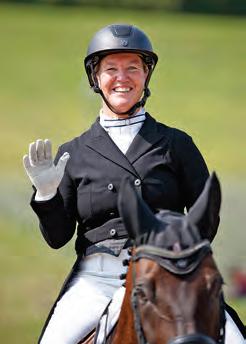

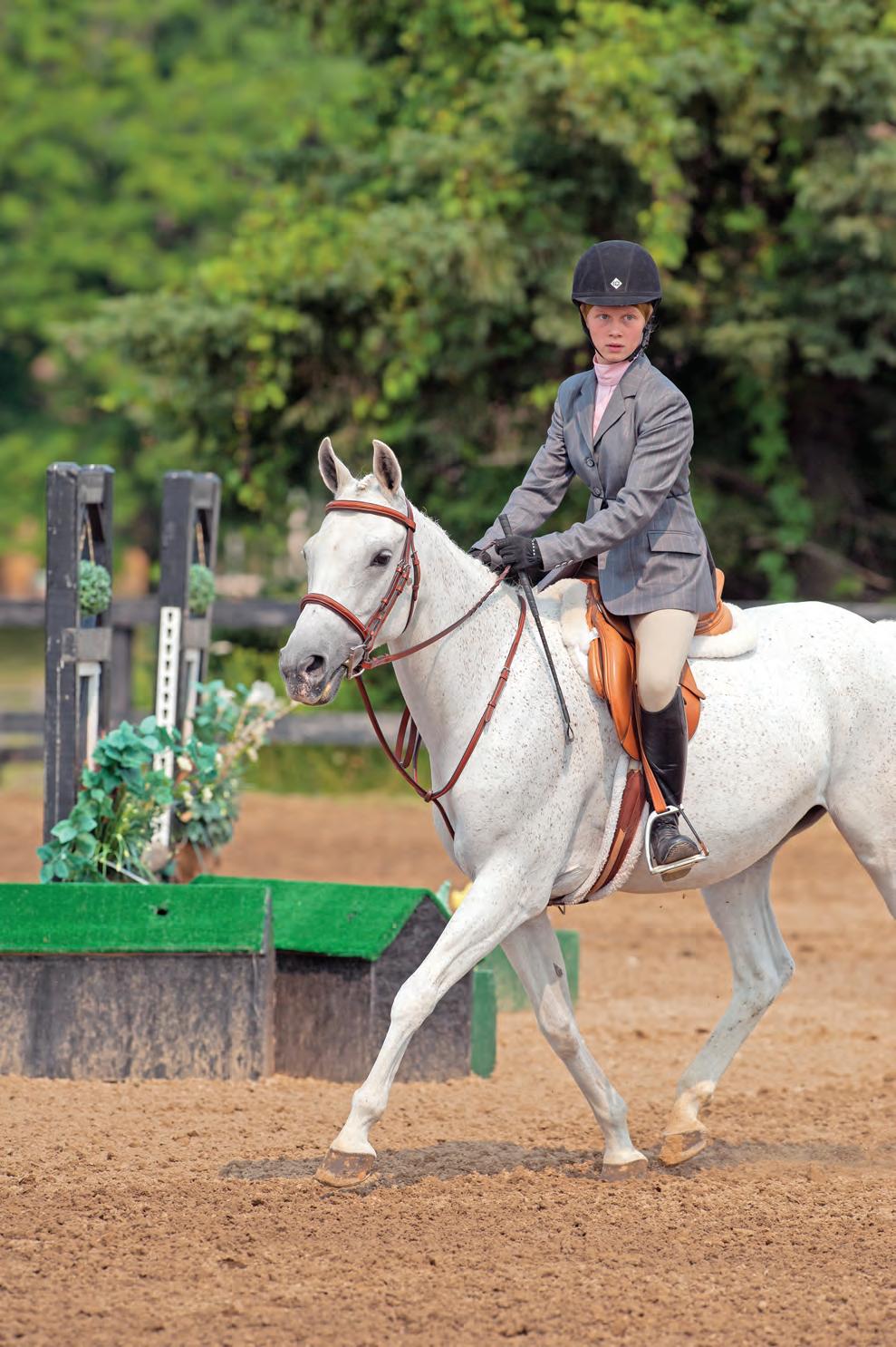
The Equestrian Canada (EC) Coach Status program is part of a collective commitment to safety for human and equine athletes and excellence in instruction and coaching. Standards for earning and maintaining coaching designations help protect athletes, coaches, and our industry.
Responding to the growing demand for oversight and accountability, in 2018 Sport Canada mandated all national sport organizations implement enhanced standards for the screening and training of coaches. With a goal of creating safe, welcoming, and inclusive environments where athletes can flourish, EC acted on this Canadian sport directive by creating the EC Coach Status program.
In doing so, EC understands there have been challenges in the roll out of the program as well as some misunderstanding in the requirements for it. To meet compliances and to reach the required standards that are commonplace for other sports in the country, moving to mandatory certification for competitive coaching by 2025 remains the overall goal.
The EC Coach Status program complements the already established National Coaching Certification Program (NCCP) managed by the Coaching Association of Canada and is delivered in partnership with Provincial and Territorial Sport Organizations across the country. Those working toward NCCP certification are eligible for EC Registered Coach Status, while those with valid NCCP certification or equivalent are eligible for EC Licensed Coach Status.
For the Coach Status program, a coach is defined as a person who provides direct instruction to athletes with the aim of improving their riding, driving, or handling abilities, and who is responsible to ensure activities are safe and developmentally appropriate. It is inclusive of individuals who identify themselves as coaches, instructors, and/or trainers of human athletes, and applies regardless of the relationship between the coach and the athlete.
EC Coach Status provides athletes, caregivers, and facility owners a greater degree of assurance knowing that important standards for safety including


Safe Sport training, First Aid/CPR, background screening, references, and liability insurance coverage have been achieved and maintained by a coach.
New for the 2023 competition season, as of July 1 organizers began validating Coach Status at sanctioned competitions. They do so with password protected access to a list of EC Registered and Licensed coaches within the EC Competition Organizer portal. While Stewards have the capability to check and validate coach statuses, it is not an expectation or requirement as their role. The focus is on maintaining the safety, health, and welfare of participants in and around the field of play.
As part of the five-year coach program implementation, Registered Status is now the minimum requirement for Bronze and Silver sanctioned events and Licensed Status is required for Gold and Platinum events. Recognizing that some coaches may not have completed their EC Coach Status requirements when enforcement began on July 1, 2023, the
In Canadian Horse Journal’s Early Summer 2023 issue, and on HORSEJournals.com, we asked:
Do you agree with Equestrian Canada’s program to license/ certify every coach by 2025?
Yes, it’s a good program.
No, it will provide no benefits.
No opinion.
Please tell us why or why not, and what changes, if any, you suggest.
Responses from our readers:
Carolyn Dobbs, Hixon, BC
YES I believe that coaches/instructors MUST be tested and certified, ensuring that the content and manner of message transfer is safe, adequate and correct. The backyard instructor, if good in delivery and safety of correct content, should not have any problem proving this. The parent of a young rider doesn’t have to play Russian roulette with their child’s sport future.
Carolyn Hoffman, Merrickville, ON
YES Unlike Europe or the UK, Canada has never had a standardized system of education for riders or coaches, except perhaps Pony Club based on the UK model. Anyone can claim to be a coach using any criteria at their disposal. Requiring all coaches be certified by EC is at least a responsible attempt to give credibility and streamline the profession. This has been a problem for years and based on previous attempts it will be interesting to see if the 2025 goal is attainable. The next issue is: Will this “standardization” last the test of time, or fall off from scrutiny as this and other programs have in the past? Always rebuilding the wheel.
Chantal Richard, Burtts Corner, NB
NO I strongly believe in certification. That’s why I think that EC’s new coach licensing doesn’t work for my province of New Brunswick. It is truly unfortunate, but currently this program is causing so much backlash that it is having the opposite effect. Many certified coaches
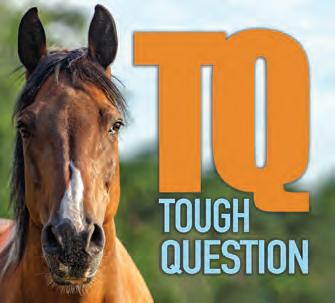
have let their certification expire, few are seeking certification, and there is a significant rise in the number of unsanctioned events in our province since this has been announced. There is outright rejection of the rule that every rider will have to be accompanied at shows by a licensed coach (though some of it is misinformation) and as a result, many competitors are opting to attend unsanctioned shows now. The numbers are stark. Our sanctioned shows are disappearing while unsanctioned ones are soaring. To be clear, these are shows that do not require vaccines for the horses, and may or may not have liability insurance, may not follow best practices, etc.
My equestrian association is trying hard to educate and promote, but there is a general feeling that it’s too expensive and too complicated to be certified and licensed. Furthermore, the new licensing requirements do not prevent abuse, unfortunately. If they did, I’d be more favourable. Until there are clear sanctions, the abuse will continue. So, this is costing more money for coaches who have small numbers of students and are already struggling to pay the bills; it is creating a whole new series of hoops to jump through; and is not really preventing abuse in any real way. No wonder people want nothing to do with it!
Helen Gregson, BC
YES There are way too many un-“certified” coaches using their Registered Coach status to advertise that they are “qualified/ certified” instructors. There are people who are teaching very badly — unable to ride well themselves, lacking very basic knowledge, and teaching children (badly) who are advertising themselves as “Registered Coaches” when they have not even got their rider levels. People believe that they are “qualified” with the title of continued on page 50
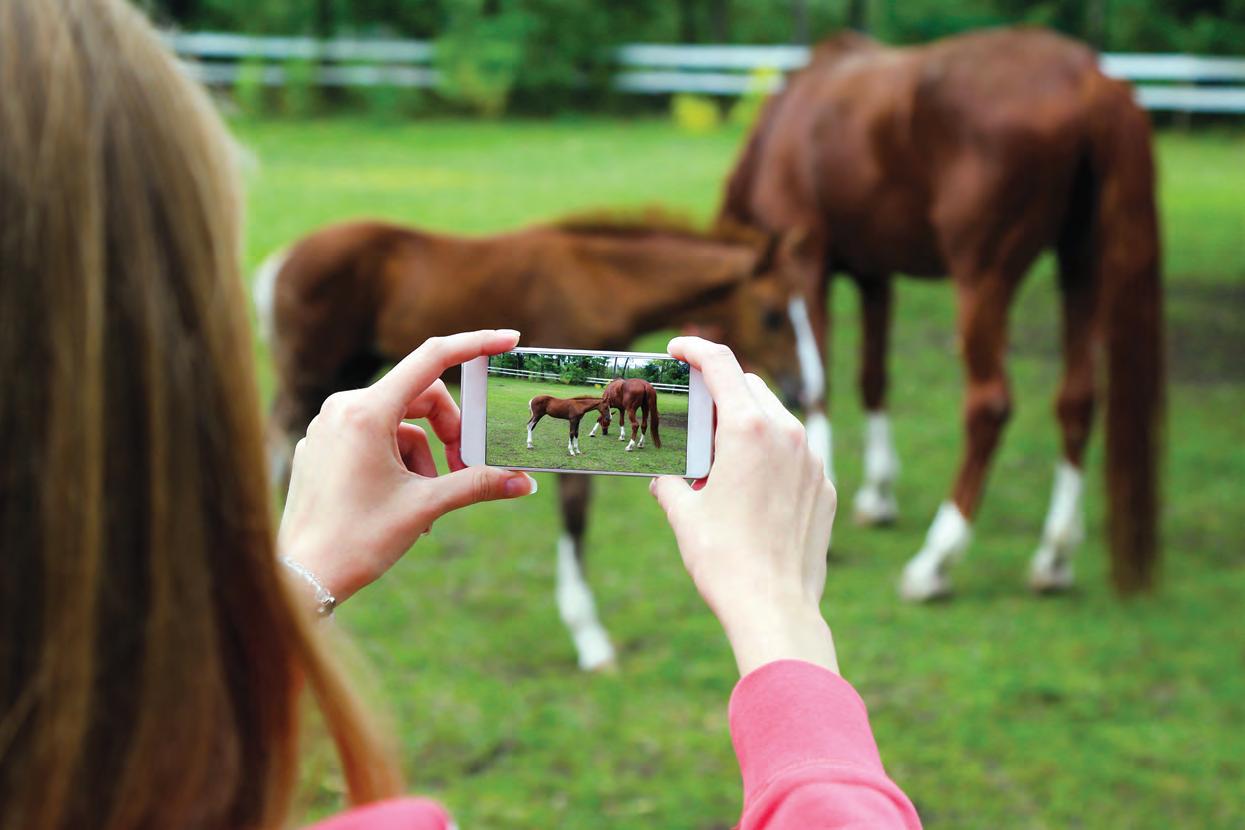
Social media can be a terrific tool for equestrians and equine businesses. It can help advance riding careers, attract and keep sponsors, and increase equine business sales.
“Social media is like a creative resume,” says Georgia Ormerod, an equine social media coordinator and owner of Kindageorgiamedia. “If you’re not on social media then you’re missing out on having a virtual sign for your business.”
But there’s a knack to using social media platforms. Setting goals and using intentional strategies that fit the brand you’re representing are key. For personal pages, posts of fabulous holidays and funny pet videos are fine, but they likely won’t help with commercial or sponsorship success. Non-stop sales pitches turn viewers off, too — and take them away from your page. So, before sharing your world with the public, plan how to use social media to advance your goals. That includes knowing your brand, understanding what you’re trying to achieve, and determining how much time and effort you want to spend on Facebook, Instagram, and other platforms.
Here’s what three experts suggest:
“When people see your posts, they should know exactly who you are and what your business does,” says Ormerod.
Social media profiles reflect who you are and who you serve, so spend some time ensuring that your profile is current and clear. Professional photos that present a classy image while incorporating relevant keywords help others discover you when searching. In addition, every business — including individual riders who are their own brand — should have a logo and specific brand colours.
Brands also need values. Values are the ideals that guide your actions, provide brand identity and personality, and help brands connect with like-minded people. The tone used in posts also reflects the brand. Using consistent tone — whether that’s comical, sweet, technical, down to earth, or something else — gives viewers confidence and indicates stability. Ensuring every post is “on brand” is imperative to maintaining followers and building an audience.
“Social media can help equestrians be influencers or experts, increase online sales, or drive potential clients to a bricksand-mortar business,” says Kerri McGregor, a social media business strategist who co-owns the digital marketing agency Outrageous Creations.
The goal of an influencer may be to attract other brands, while experts may be seeking followers to increase demand for their expertise. Online businesses use social media to heighten sales or drive business to their online store, much the same as bricks and mortar businesses.
“There has to be a reason for somebody to follow your social media,” says Ormerod, “and there needs to be a reason for people to keep coming back.”
Before worrying about what to post and how often, determine what you want to achieve and set goals for success.
“Goals will direct the content you choose to post, whether you want to grow your audience, increase engagement, or generate lots of ‘shares’ to reach a wider audience,” says McGregor.

Three of the most successful types of social media posts are those that share success stories; educate or inform potential clients; and network or connect with other equestrians, businesses, and sponsors.
“Personal stories and behind-thescenes videos get the most traction,” says McGregor. Providing something that people don’t see elsewhere, particularly something that offers a peek behind the curtain of someone’s personal life or business, grabs attention.
“The key is to post creative content so that people will continue to follow you,” says Ormerod. “Your posts showcase who you are.”
“You want to be authentic,” says McGregor. “No selling, no long blocks of text, and no crappy photos.
“Pay attention to what grabs you on social media,” McGregor continues. “That will probably appeal to others, too.”
McGregor also suggests making posts fun, trying out new ideas and embracing new social media platform features when they first come out. Following trends that have already started can attract attention, too. If there’s a challenge that everyone is trying to do and it fits your brand, give it a
go. All the better if the result is a unique, funny video that engages viewers.
Staying on brand is key. Regular followers like to know what they’re going to get. For example, if viewers expect educational pieces about training horses, then post about that, not riding fashion or what you ate for dinner.
“Following platform metrics will help identify what your audience likes, then you can do more of that,” says McGregor. “Social media platforms reward content that attracts people to the platform and keeps their attention.”
McGregor suggests posting between once and three times per week — whatever you can realistically manage and stick to.
“There’s no magic to the ‘right’ number of posts,” says McGregor. “The biggest thing is to figure out a schedule where you can post consistently. That builds trust with your audience, helps attract sponsors, and is rewarded by platform algorithms over frequency.”
“You don’t want to just post for the sake of posting,” says Ormerod. “You really have to think about why somebody would interact with your post.”
Good quality content is more important than how often you post.
“It’s generally recommended to post on Instagram two or three times per week and no more than once per day,” says Sarah Mellings of Equestrian Online Media, adding that one post per day on Facebook is enough. “Some studies have found a drop in engagement if you post more frequently.”
Sponsors expect return on investment and part of that return can come from social media posts and interactions with the horses, riders, and events they sponsor. Those seeking sponsorship can use social media to develop relationships with potential future sponsors.
“The best way to get the attention of potential sponsors is to provide user generated content,” says McGregor. “Start creating content that showcases their brand, then tag the company in your post so that they can share your post on their feed.”
Businesses are always seeking content that will attract viewers. If you can provide potential sponsors with free content, you’re showing them what you

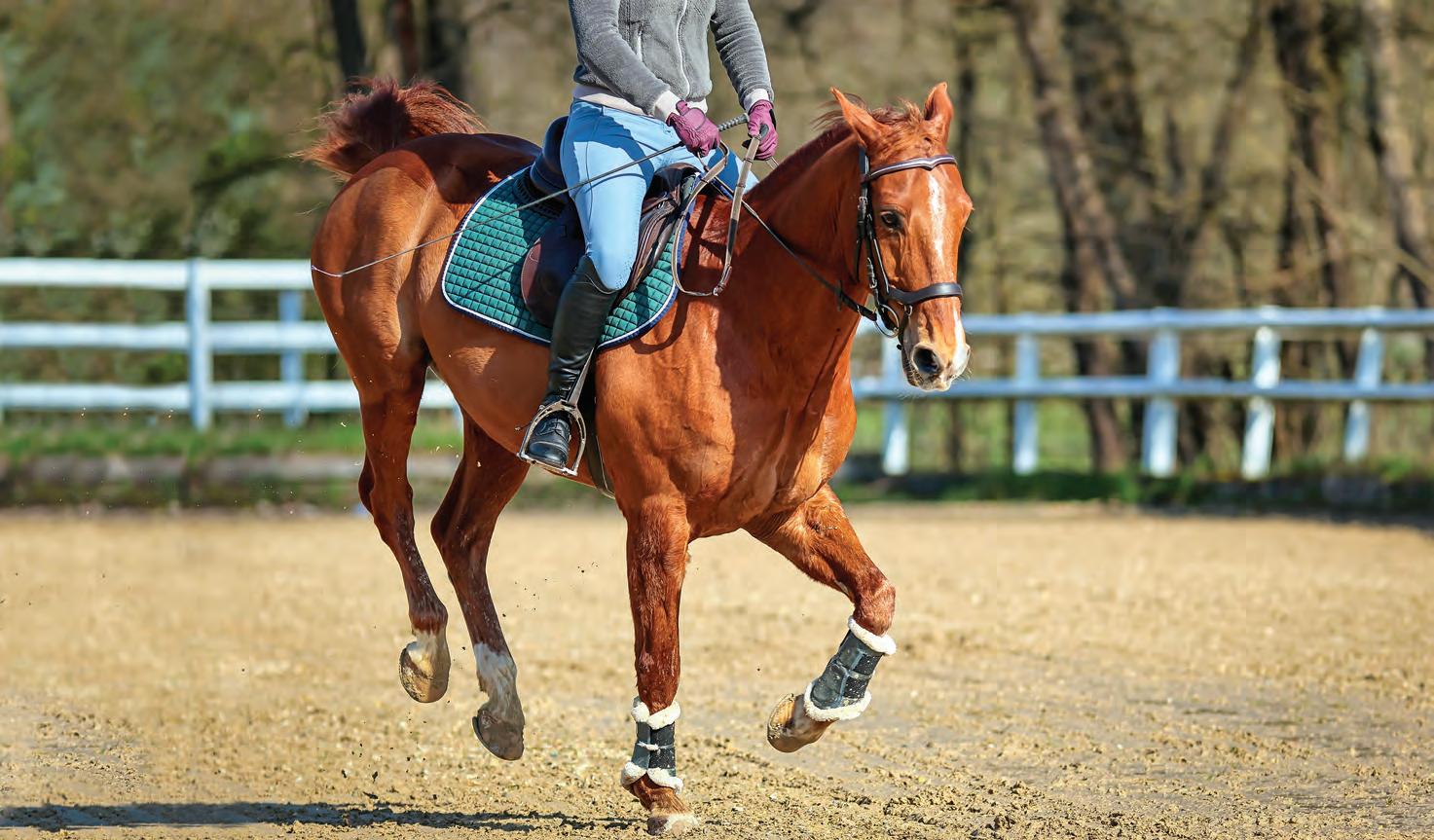
“Experience is not the best teacher — only evaluated experience is.” These words of wisdom are from professor and pastor, Dr. Howard Hendricks.
The end of the horse show season is time for evaluation. What went well?
What would you like to change?
Competitors entering the next horse show without reflection often revisit mistakes like a Groundhog Day time loop.
In my years of training, coaching, and judging, I’ve gained a “wealth” of stories and experiences with horses, horse shows,
and horse people. Yet, the value of experience dwindles if I fail to evaluate that experience — to take responsibility for my blunders and strengthen my strengths.
Doing the same thing over and over and expecting a different result may count as experience but leaves me riding in the same rut.
In equestrian sport, your teammate doesn’t speak or think “human.” He doesn’t even share your goals. So, expect the unexpected — mistakes, mishaps, and misbehaviours.
Evaluating each of these show ring experiences depends on discerning WHY they happened. We’ll get to the foundation and consider how to rebuild after a show ring setback, using the tools of equitation science — the science of how horses learn and think.
As a judge I groan when my winner misses a lead, a jumping distance on the last line, or moves a foot during showmanship inspection. I reluctantly

assign penalties, and the red ribbon winner earns the pastel — or no ribbon at all.
Rider errors (those OOPS moments) are minor miscalculations, like asking for the wrong gait, rising on the wrong diagonal, or forgetting a pattern element altogether. Bigger bloopers involve forgetting the course, forgetting your show number, or using two hands on curb reins.
Evaluation is taking inventory of what happened; it’s a humble admission of mental lapses. I failed to deeply memorize the course. I rushed through that movement because I was nervous. I (not my coach, not my Dad) was the one responsible for checking my equipment before riding through the in-gate. Managing in the moment involves learning to carry on after a mistake in the ring and is part of becoming a savvy competitor. Guard against one element of your performance having a domino effect on the remaining elements. Wrong diagonal? Sit a beat and carry on. Start a spin in the wrong direction? Spin the right way and finish strong.
Rebuilding in the off season is not just a cliché; each mistake is a learning opportunity. After riding off-course more times than I can count, not wanting to repeat that lost-in-the-jungle-of-jumps feeling was the incentive to deeply memorize. What’s the source of your mental lapse? Is it distraction? Perhaps your mind wandered to the bleachers; you failed to ride every stride and your horse broke gait; or, you were focused on your riding position to the point of being stiff and you lost your flow, your horse’s stride got flatter and you failed to notice.
Miscalculations and miscues from the rider are fairly straightforward and can be remedied at home with some good coaching and practice. Prepare for the next shows by practicing the tough stuff. Overprepare and go with the flow.
Mishaps are more serious. When equestrians take their horses off-property, it’s not a matter of if but when “suddenly” moments will happen.
Your horse kicks out at a competitor passing too close, gets spooked by a driving cart in the adjacent warm-up ring, or stumbles and gets rattled.
Evaluation: Why do mishaps happen? A common denominator is fear. As prey animals, horses feel vulnerable in unfamiliar territory. They feel claustrophobic when trapped. They rush, refuse, and rear. To make matters worse, the adrenaline rush of the incident can frame a scary snapshot in the horse’s mind,
Rebuild in the off-season by breaking skills into simpler steps to reinforce the horse’s understanding of your aids and build confidence.
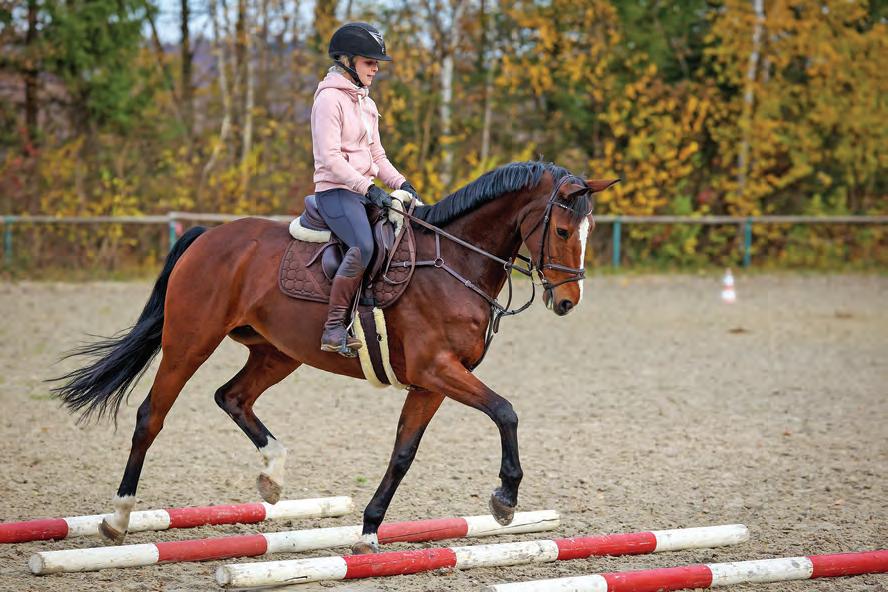
Prepare your horse well before taking him to a show by exposing him to a variety of environments and distractions. Practice in a crowded arena where there are lots of things happening, and in a quiet field all alone, and expose him to a variety of experiences.
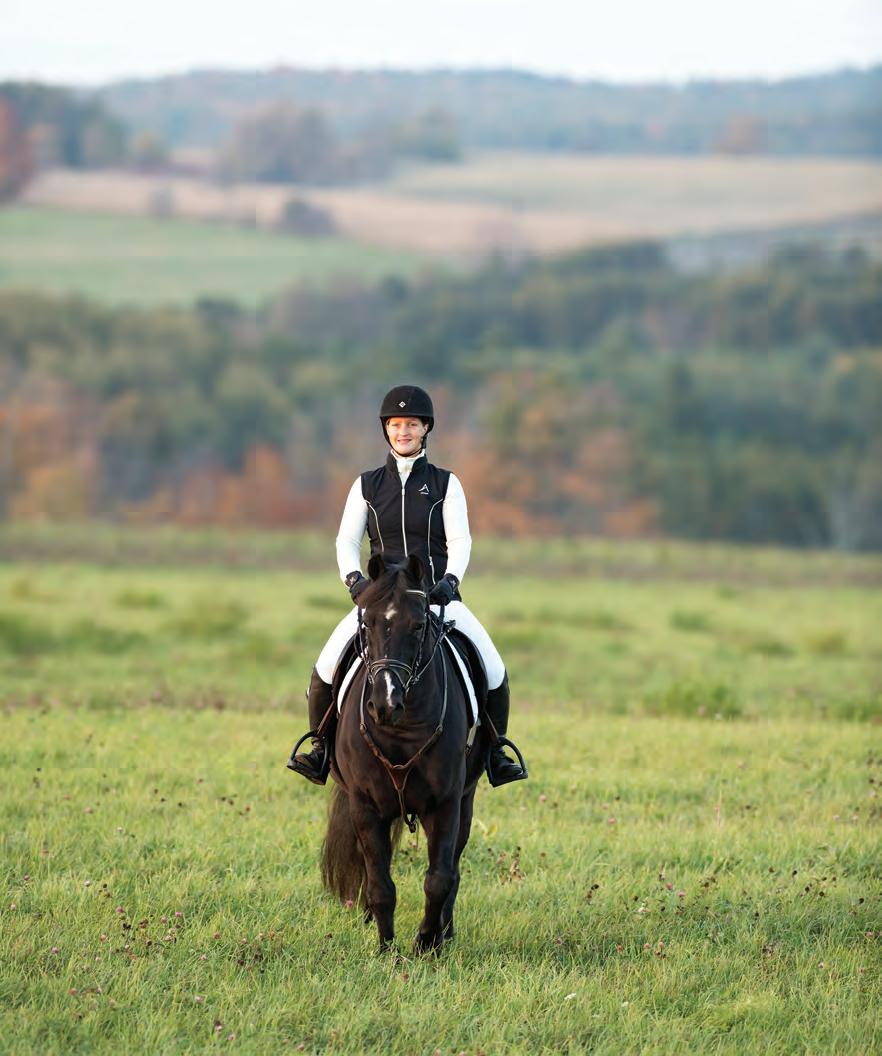

 PHOTO: CLIX PHOTOGRAPHY
PHOTO: SHUTTERSTOCK/ROLF DANNENBERG
PHOTO: CLIX PHOTOGRAPHY
PHOTO: SHUTTERSTOCK/ROLF DANNENBERG

As the shorter, colder winter months settle in, brief but purposeful groundwork sessions become critical for a horse’s physiology. Granted, fitness-based groundwork will not keep a horse at peak performance level, but it will prevent total erosion of neuromuscular and metabolic fitness during times of abbreviated schedules. When consistently and strategically practiced, it improves muscle tone, basic metabolic function, and neuromuscular patterns.
In fact, evidence has shown that a large percentage of muscle activity can be maintained in non-ridden horses when groundwork sessions are performed six or more times per week for a period of 25 minutes or longer. A daily 25-minute bout of continuous movement at 40 percent of maximum heart rate is the minimal amount needed to retain a fitness base. For most horses this equals a rate of 90 beats per minute, attained at a brisk walk or easy jog as performed during groundwork.
At this rate, when done consistently, groundwork contributes to a horse’s athleticism in the following ways:
• Improve neuromuscular activation and coordination;
• Increase activity of sensory and motor nerves, awaken poorly recruited muscles;
• Strengthen postural muscle and ligament system;
• Improve balance, alignment, and joint flexion through practicing range-of-motion in a relaxed state.
Non-riding plans for horses aiming to maintain fitness rely on the following principles. Keep these in mind when moving beyond groundwork for burning energy or teaching skills to a means of measurable physical gains.
Above all, fitness-based groundwork depends on consistency. Think of these daily doses of low intensity stimulus being bricks that stack up on each other to form a solid structure. Each brick relies on the placement of the previous ones. Similarly, low intensity activity like groundwork requires high frequency each week to affect physiology.
When practiced sporadically, physical gains will not be made, although it could arguably still benefit the horse’s mental state during periods of downtime. The
benefit of this type of training is cumulative. No single session or set of exercises will bring results unless it is stacked on dozens of other ones. In other words, it will always be more fruitful to spend 25 to 30 minutes doing productive walking exercises five or more days per week versus allowing a horse to idle during the week and then longing him on Saturday until he puffs and drips sweats.
Your lines of travel should blend plenty of long straights with occasional bending and circles. In fact, circles should happen sparingly, carefully, and with purpose. Due to the unevenness of ground reaction forces on the horse’s limbs when circling, repetition of this practice leads to asymmetry in the horse’s back muscles, not to mention the stress to hoof structures. Given that our goal is to improve rather than detract from the horse’s locomotion, the use of circles is judicious. To avoid excessive repetitive circles, successful groundwork routines rely on handlers moving around and covering a fair amount of ground each
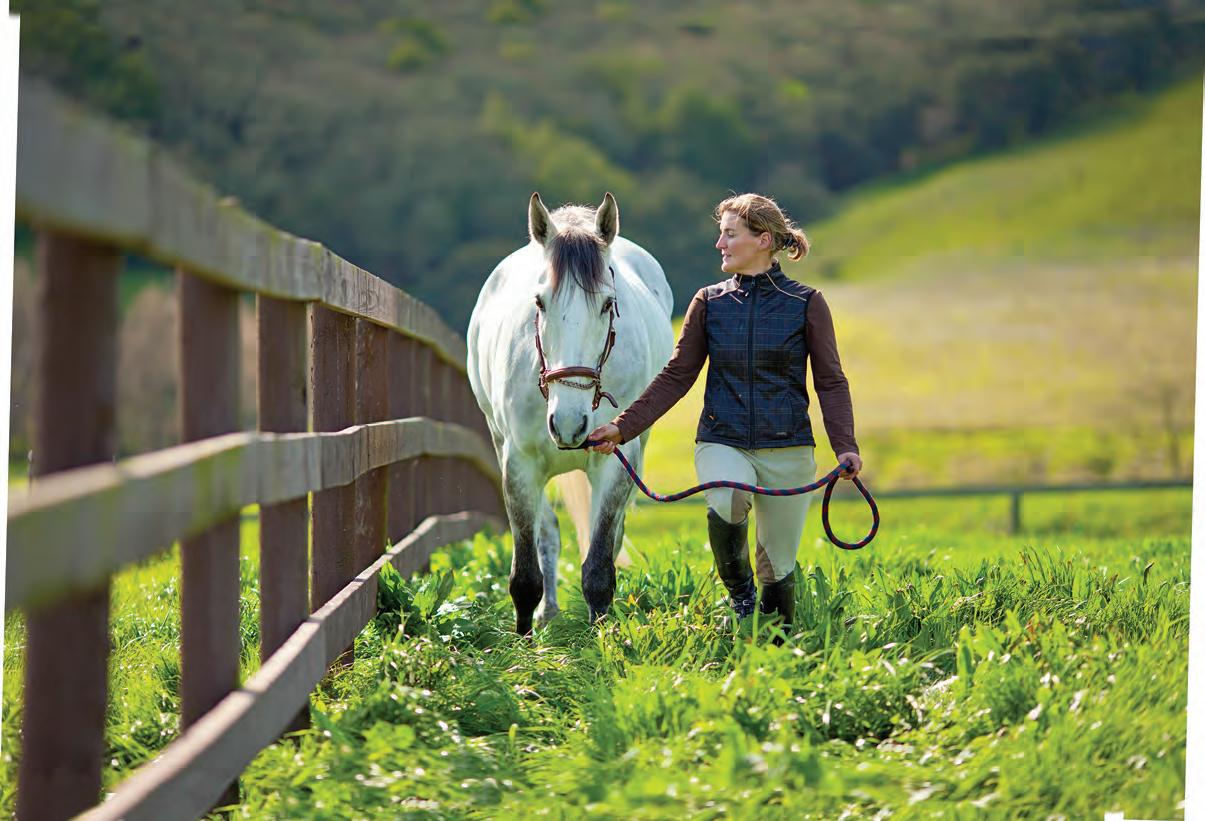 PHOTO: SHUTTERSTOCK/ERICKSON STOCK
PHOTO: SHUTTERSTOCK/ERICKSON STOCK
Results of fitness-based low-intensity groundwork depend on consistency and high frequency. Cumulative benefits result from walking exercises done for at least 30 minutes five or six days a week.
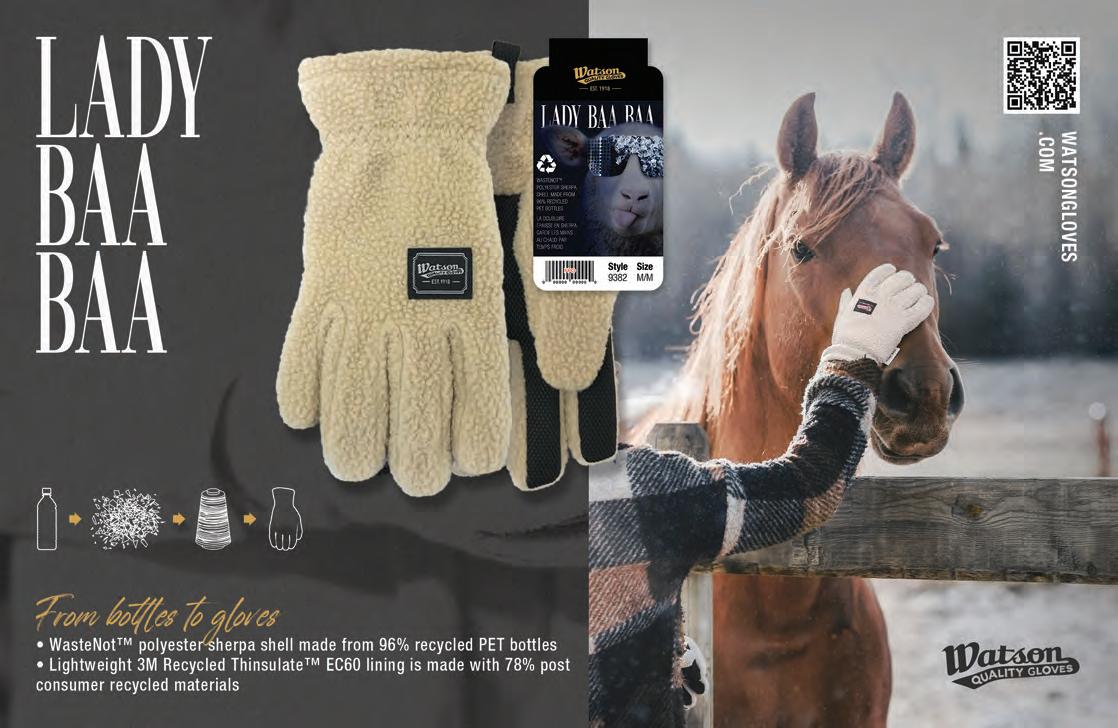
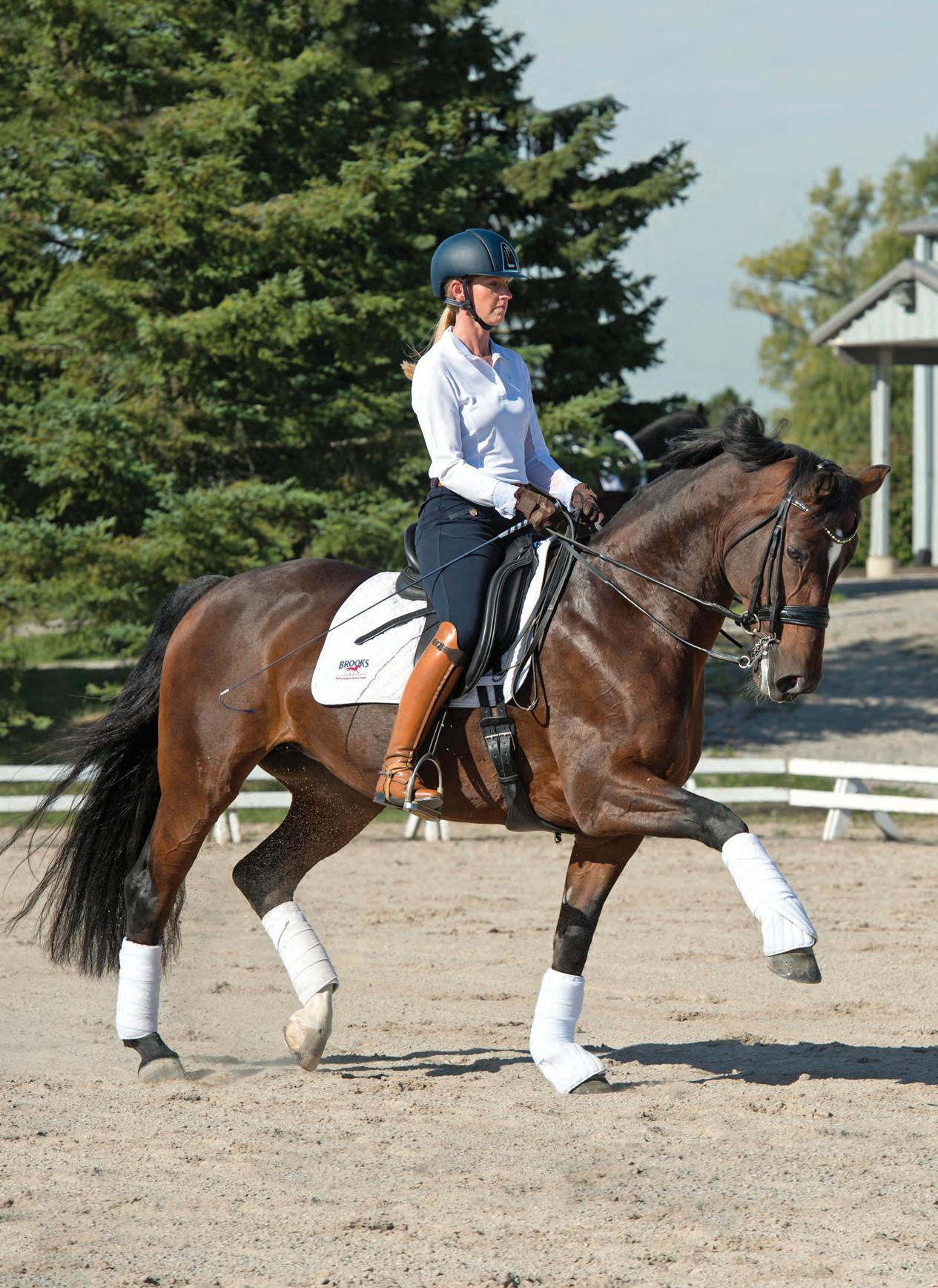

A strong, stable core can revolutionize equestrian performance.
Equestrian sports require much more than just mastering the art of riding; they are physically demanding and engage a wide array of muscles throughout the body. Riders depend heavily on their core muscles, including the rectus and transversus abdominus, obliques, and lower back to maintain balance, stability, and posture in the saddle.
Strength, balance, coordination, and flexibility collectively allow riders to clearly communicate and develop harmonious partnerships with their horses.
A strong, stable core can revolutionize equestrian performance. Pilates focuses on targeting core muscles, including the often-overlooked deep stabilizers. Unlike some forms of exercise that primarily engage superficial muscles, Pilates delves deep into the core, homing in on the transversus abdominis, multifidus, and pelvic floor muscles. These deep

stabilizers play a pivotal role in maintaining spinal stability, promoting a strong and supportive core structure. Pilates exercises emphasize controlled, deliberate movements that activate these muscles with each repetition, enhancing their endurance and strength. By focusing on these deep stabilizers, Pilates not only cultivates a sculpted and toned core but also fortifies the foundation for better posture, balance, and coordination, essential attributes for equestrians in all disciplines seeking peak performance in the saddle.
Balance is paramount for riders. A strong core acts as the anchor that connects a rider to their horse and is the cornerstone of better balance. Core strength and balance allow riders to maintain postural alignment, distribute weight evenly, and effectively communicate cues through subtle shifts
continued on page 73
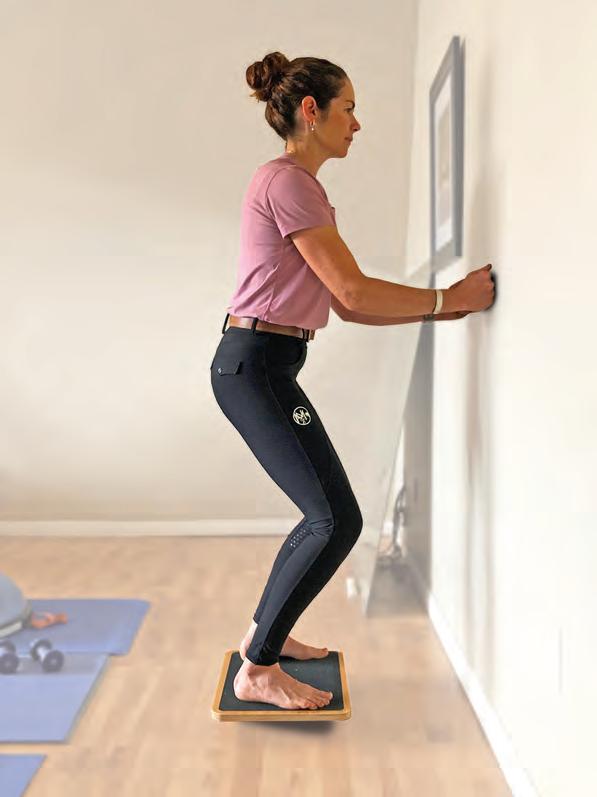
STARTING POSITION:
Stand in riding position with knees slightly bent, hands as though holding reins with elbows bent.
n Have a partner stand in front of you or you can stand in front of a wall or table.
n Press your fists against those of your partner and notice the feeling of your core engaging. This is what you should feel when you ride — the idea of resistance and pushing forward with arms, not pulling backwards. This is an isometric use of muscles — where muscles do not shorten but become firm due to resistance.
n Hold for 10 seconds and repeat 5 times.
n As a progression you can stand on a stability board to challenge your balance.

people, you know how it feels. You’re enjoying your horse time and minding your own business, when someone asks Why aren’t you riding that horse? Or someone jokes about taking your “very large dog” for a walk. I had one barn neighbour show her friend on video chat “the girl that doesn’t ride her horse” (me) as we were walking by. It would be awkward if it wasn’t so common. Horses and riding are synonymous in the human psyche, and any departure from this norm is considered very odd indeed, despite the fact that some horses don’t benefit from riding and some humans really don’t enjoy riding.
By writing this article, my hope is to give you permission to not ride your horse for a short time, or for a long time, or for the duration of your relationship. It may seem simple, but overcoming the pressure, the feelings of guilt or shame, the weird looks, and the judgements from
23-year-old mare and an unridden eightyear-old mare with chronic lameness, I am writing this piece for myself as well.
We have been taught that not only are horses and riding inextricably linked, horses are valuable only because of their rideability. Although untrue, this mindset is deeply ingrained. For many people, riding feels like the only way of relating to their horses and making sense of their extensive commitment. Engaging in competition, consistently achieving greater skill sets, constantly learning, and pushing oneself often allows us to justify the layout of time, energy, and money. This makes it very tricky to let go of riding as part of our equine identity, even if we don’t want to get in the saddle or our horse is not willing or able to be ridden. For many, riding through fear and patching together a relatively sound and safe horse is seen as part of the accomplishment, and a necessary step if
injury or unsoundness, like my mare Raven with front-limb arthritis. Some people will go to incredible lengths, spending enormous amounts of energy and money, to rehabilitate a horse to be ridden “soundly,” or medicate or inject a horse to be sound enough to be ridden in relative comfort. Many horses are comfortable at a walk without a rider, only to show substantial lameness with a rider at a trot, as is the case with Raven. On one hand I get it, but I also wonder if the horse wants to be continuously rehabbed or medicated enough to comfortably carry a rider. Or are we doing this because we don’t know what else to do? Are we doing it because we are lost without the structure of riding to create connection and purpose?
This past year, I have been through several debilitating health events. I have ridden my mare Diva perhaps a dozen times (a generous estimate) in the past 12

Daily grooming is good for the health of your horse’s coat and gives you an opportunity to do a visual check for minor injuries or irritations while promoting trust and bonding between horse and human.

realized that Diva, who lives in a track system on over an acre with Raven, does not appear to care one bit that we are not riding. I got on her back after three months with no issues, partly because we do other things together on the ground daily that create connection. This is not the case for all horses, especially those living in a less enriched environment, but for this horse, my guilt is unfounded. She is content being an unridden horse, and when I’m ready, she’ll be content being a ridden horse.
For Raven, I decided not to medicate, which means she is neither capable of, nor comfortable, carrying a human. I have had to move through grief around this, as she is such a smart and curious mare, but given her varying digestive health I did not feel right about giving her daily medications shown to negatively impact gut and kidney health. Raven is content without riding, and I am open to riding at a time when she
is capable and comfortable, if she wants to. I am always a believer in the potential for healing and change.
Do I do other things with Raven?
Absolutely! We do lots together including classical training, liberty training, clicker training (Heather Nelson & Hannah Weston – Connection Training), movement training with obstacles (PantherFlow with Kathy Sierra), rehab exercises with gym mats, and stretching (Elisse Miki of Equilibria Therapeutics), manual therapy and grooming, walking trails together and going on adventures in the trailer. Once I accepted that we were not riding, another world of ways to spend time with horses opened up, and we live in a time where there are countless and often free resources available no matter what you and your horse enjoy doing together.
Recently, I had a session with a 17 hand eight-year-old off-the-track Thoroughbred. His new human hadn’t ridden him since he arrived from the track, and she shared her frustration at
how often she had been asked when she was getting on. In our session, it was clear that he was in the process of finding connection and balance in his body after his time on the track. He was releasing stored tension and tensional patterns, and exploring postures that allowed his back to be free of tension and pain when he was eventually ridden (he had learned to travel in an inverted posture), all while healing from losing his mom at just 10 weeks of age. Until his body and mind were ready, any riding would amplify and further cement the issues already present. This is a common situation, especially in young horses barely able to carry themselves, much less a rider. The foundation that we provide for them — to be able to carry the weight of a rider in relative relaxation with a supportive nervous system supplying focus, strength, optimal function and coordination — ensures a longer and more sustainable relationship (ridden or unridden), with a body and mind that


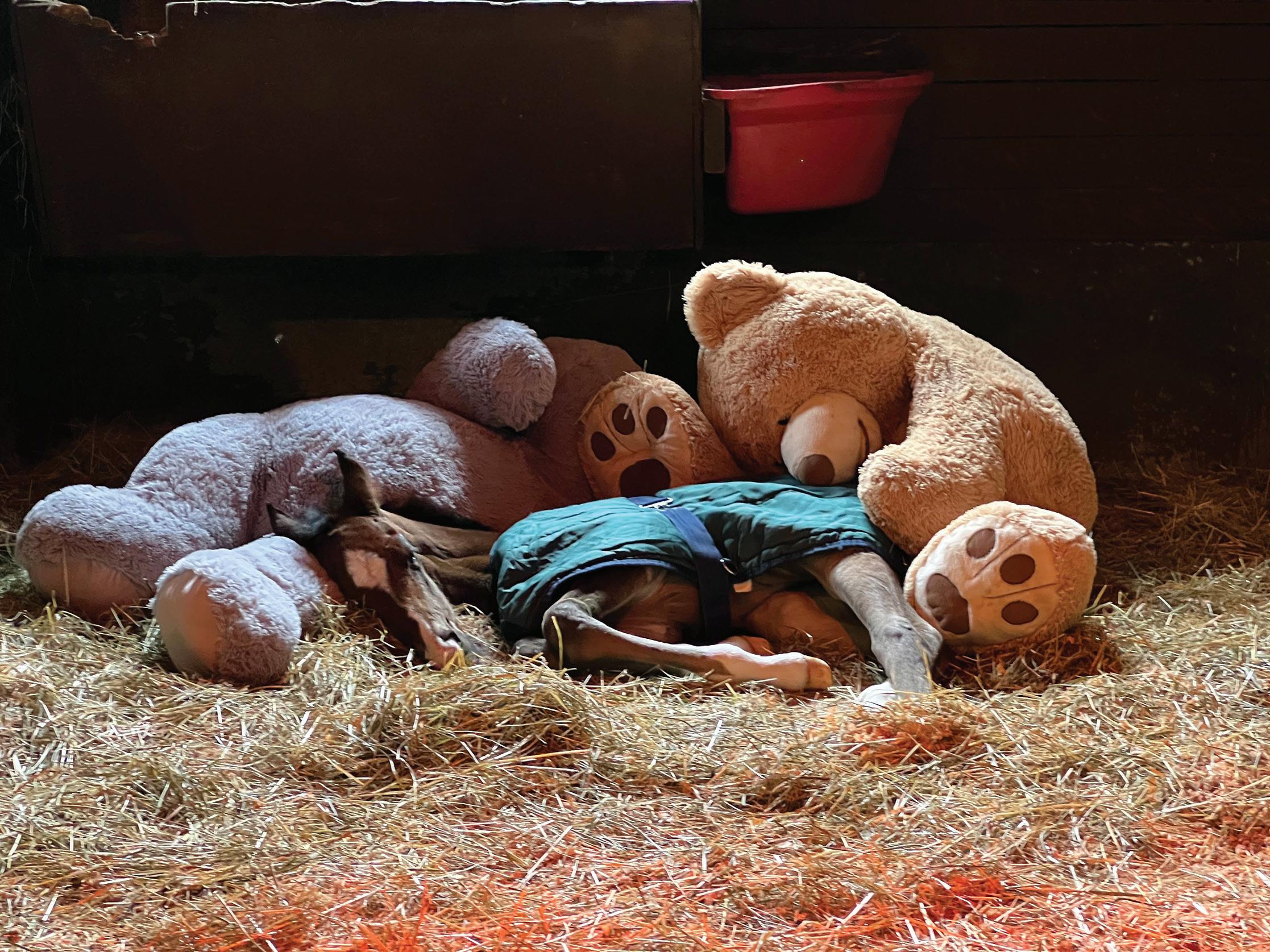
Flash (Flashback Blues) was orphaned within a few days of her birth due to complications during foaling. She found an adoptive mother in Annabelle, a Clydesdale mare, who kindly took her on when Flash was three weeks old. Flash was bottle fed until she was almost four months old. She now lives happily with her half sister, who was also weaned far too early, and they are both thriving. Flash is owned by Lorna White, and photographed by Carol McEachen..
Welcome to our 32nd Annual Celebration of Horses Photo Contest, the longest-running equine photo contest in Canada.
The number of contest entries grows every year, but in 2023 it exploded past the previous record with a 43 percent increase. We welcomed back many of our regulars and they were joined by hundreds of new contestants. Thank you to everyone who shared their special images and stories with us.
To ThinLine Canada, we extend our sincere appreciation for generously donating grand prizes in the six main categories. And special thanks to the Canadian Quarter Horse Association who graciously sponsored the Quarter Horse division. Runners-up in all categories were sponsored by Horse Community Journals Inc., publishers of this magazine.
We hope you enjoy viewing this year’s Winners and Runners-Up as much as we did.

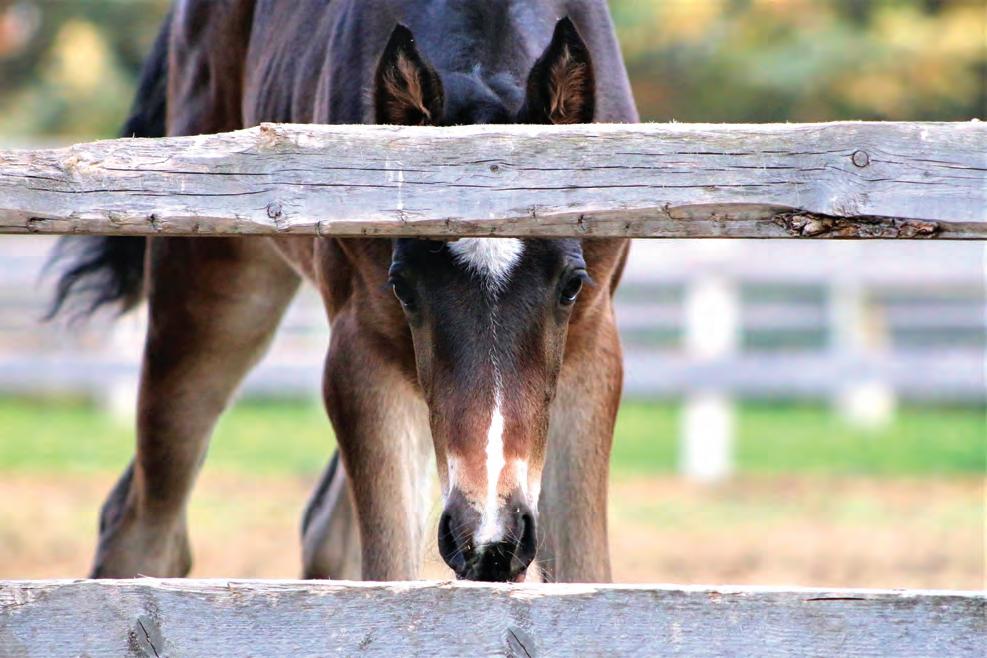
May 26. “I

RUNNER-UP
The One and Only, Sumac Rye Whizkey
“When you have an itch that must be scratched!”
This flexible foal was photographed by Wendy A Doggett of Pictou County, NS.
 This gorgeous standardbred colt was born on
was taking photos of his friend in an adjoining pen and clearly Lee (Sirius Lee Quick) didn’t approve of my camera being trained on another horse,” says owner and photographer Evelyn Sabraw of Acme, AB.
2ND
This gorgeous standardbred colt was born on
was taking photos of his friend in an adjoining pen and clearly Lee (Sirius Lee Quick) didn’t approve of my camera being trained on another horse,” says owner and photographer Evelyn Sabraw of Acme, AB.
2ND




